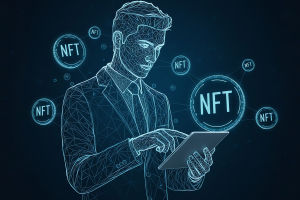Tokenization & Trading
The evolution of financial markets is moving beyond digitization into a new era defined by tokenization.
This technology, built on distributed ledger principles, enables the conversion of tangible and intangible assets into digital tokens that can be traded seamlessly across decentralized platforms.
In the context of future trading, tokenization is not merely a technological innovation—it is a fundamental restructuring of how value is represented, exchanged, and settled. Tokenized assets offer the potential to make markets more efficient, more liquid, and more inclusive. While early applications focused on cryptocurrencies, the trajectory now points toward broader financial instruments, including equities, commodities, and even derivatives.
Defining Tokenization: More Than Just Digital Representation
Tokenization involves converting ownership rights of real-world or abstract assets into a digital token recorded on a blockchain. These tokens are not just representations, they function as programmable units embedded with logic, compliance rules, and transaction conditions. Larry Fink, CEO of BlackRock, the world's largest asset manager: "The next generation for markets, the next generation for securities, will be tokenization of securities."
In future trading, this process could include tokenizing futures contracts themselves, enabling automatic settlement based on smart contract conditions. Unlike traditional contracts, which rely on intermediaries and legacy systems for enforcement, tokenized derivatives can execute predefined actions autonomously, improving speed and reducing counterparty risk.
Efficiency Gains Through Smart Settlement
One of the most compelling advantages of tokenization in future trading lies in the efficiency of settlement processes. Traditional clearing systems often involve multiple intermediaries, reconciliations, and days of lag between transaction and settlement. Tokenized futures contracts can settle instantaneously or within minutes depending on the consensus mechanism and chain architecture. This reduces liquidity lock-up, minimizes margin requirements, and lowers systemic risk.
Enhanced Transparency and Real-Time Auditability
The immutable and transparent nature of distributed ledgers enhances regulatory oversight and compliance in future markets. Every transaction involving tokenized contracts is recorded on-chain, providing real-time visibility to auditors and regulators without needing intrusive data extraction.
This shift is especially important for markets where opacity has historically led to manipulation. For instance, in commodity futures or synthetic derivatives, tokenization enables full visibility of exposure, collateral, and ownership lineage at any moment. Moreover, with permissioned blockchains, access can be calibrated, ensuring sensitive data remains confidential while essential audit trails stay accessible to authorized bodies.
Liquidity Access and Global Participation
Tokenization reduces the friction associated with traditional asset classes, allowing smaller investors and institutions in developing markets to participate in future trading previously dominated by a few centralized entities. Fractional ownership of tokenized futures means capital requirements can be lowered without reducing exposure. Additionally, around-the-clock access becomes feasible. Unlike centralized exchanges with limited trading hours, decentralized token markets can operate continuously, matching global participants across different time zones and regulatory environments.
This has implications for commodities and forex derivatives, where global demand often clashes with regional trading constraints. Tokenized platforms eliminate those barriers, enabling deeper liquidity pools and fairer price discovery.
Risk and Security: Not Without Challenges
Despite its promise, tokenization introduces new complexities. Smart contracts, while powerful, are not infallible. Vulnerabilities in their code can be exploited unless rigorously tested. Moreover, regulatory clarity remains a significant hurdle in many jurisdictions. Questions about legal enforceability, custody of tokenized futures, and cross-border tax implications remain unresolved. As tokenization becomes more prevalent, coordinated regulatory frameworks will be essential to mitigate systemic risk without stifling innovation.
Cybersecurity also takes on a new dimension. A compromised smart contract could lead to automated execution of high-value trades, with limited recourse once the process is triggered. Therefore, technical audit standards and formal verification of smart contract logic must become standard practice in financial engineering.
Institutional Integration and Hybrid Systems
While full decentralization remains an ideal for some, the practical path forward likely involves hybrid models. Tokenized futures may be traded on platforms that blend blockchain's transparency with the institutional safeguards of traditional exchanges. Interoperability will be key. Systems that allow seamless transfer of assets between tokenized and legacy environments will attract the broadest adoption. Already, several industry groups are piloting models where clearinghouses validate token settlements while preserving regulatory requirements.
The foundation for a tokenized trading ecosystem is being laid today. As blockchain standards mature and legal frameworks evolve, the architecture for high-speed, secure, and globally accessible markets is emerging. For future trading, tokenization could mean faster on-boarding, programmable risk controls, dynamic collateralization, and automated reporting. These are not incremental upgrades—they represent a paradigm shift in how markets operate.
However, mass adoption will require trust not only in the technology but in the institutions that govern it. For that reason, education, transparency, and cross-industry collaboration will play a pivotal role in shaping the tokenized future of trading.
Contact to : xyjph123@gmail.com
Privacy Agreement
Copyright © boyuanhulian 2020 - 2022. All Right Reserved.
Privacy Agreement
Copyright © boyuanhulian 2020 - 2022. All Right Reserved.


